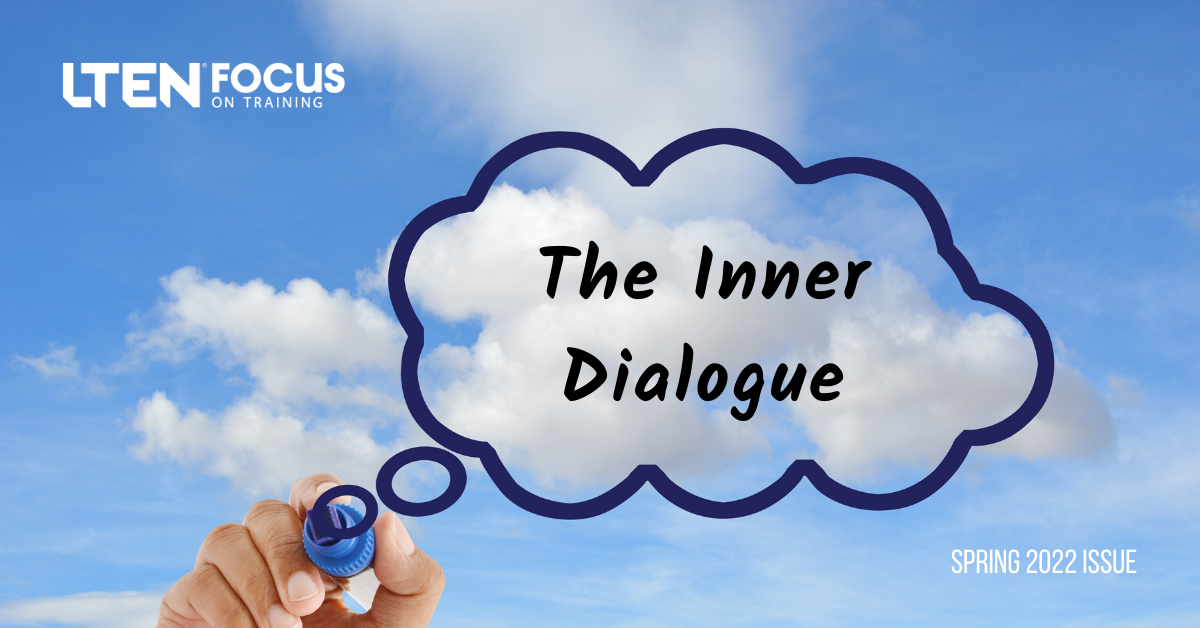
The Inner Dialogue
SOLUTIONS – Krishna C. Kalva
Inner dialogue comes from our thoughts, actions and conversations
 Do you notice a voice inside yourself that keeps talking? I see the voice coming from an inner dialogue that we subconsciously engage with. The information sourced for our inner dialogue comes from our thoughts, actions and conversations as we indulge in the outer world. The sourced information is often stored as memories in our minds that we keep visiting.
Do you notice a voice inside yourself that keeps talking? I see the voice coming from an inner dialogue that we subconsciously engage with. The information sourced for our inner dialogue comes from our thoughts, actions and conversations as we indulge in the outer world. The sourced information is often stored as memories in our minds that we keep visiting.
Some of our inner dialogues have louder voices when compared to others. Each voice within ourselves tries to signify its importance by calling for our attention. The loudness of the voice coming from these dialogues is the same for both pleasant and challenging topics.
Some inner dialogues have a profound effect on our thought patterns that we tend to cling to for hours or sometimes even days. We sometimes indulge ourselves in these inner dialogues to find out the message they are trying to convey. The messages coming out could be in the form of feelings or emotions that in some cases require further investigation.
Thought Patterns
It is evident that our experiences – both personal and professional – are shaped by our thought patterns formed and nurtured over a period.
Our thought patterns are conditioned by our past experiences that we hold onto as we participate in the present. We label each experience as good or bad depending on the outcomes we received. Upon careful investigation we understand the interdependent nature of thoughts and experiences toward each other.
For example, if positive thoughts enter our minds, we have positive inner dialogues, thereby allowing us to experience positive results. This is the nature of interdependency. Once we identify the interdependent nature of all activities, we can readily apply it.
Nature at Work
Applying the interdependent nature in the context of business life, let’s take the example of a team of professionals who recently came together to work as a team. Like any other newly formed team, they will be navigating through different stages before becoming a high-performing team.
Newly formed teams sometimes experience characteristics like conflict, resistance, etc., as they are yet to completely understand the individual and team dynamics. Often during this stage, it is noticed that cultural backgrounds, historical details and past experiences sometimes drive individual thought patterns and how one associates to a given situation.
It is important for a leader or coach to identify the given situation and take a guided approach by helping the team practice qualities like active listening, observation, empathy and remaining guarded of their individual thoughts.
A Little Guidance
A guided approach can help both the individual and the team move past any conflict or resistance phase. The framework of guidance can include fact-finding, coaching and feedback, emotional support, etc., that creates awareness by building a trusted environment for the team and leading them toward greater collaboration.
The awareness referenced here can be associated with the concept of interdependency. That means, with the acknowledgment of the fact that it was necessary for the team to navigate through their initial challenging phase as it helped them in becoming a high-performing team. The transformation is built on a solid foundation of values and culture.
Once we understand the concept both from a theoretical and experiential perspective, teams can consciously choose which of the voices to listen to and be more mindful of their thoughts and actions.
Conclusion
Let me take your attention back to the original idea, inner dialogue. I consider it as a natural part of the brain activity asking us to listen to our inner dialogues shaped by our thought patterns.
Some of the voices in these dialogues are stronger than others. The loudness of these voices inside of us is determined by how we personally associate with them. Some of these dialogues are driven by labels like ego, empathy, anger, excitement, etc., and their outcomes are interdependent on the associated labels.
It is important to observe our thoughts, identify the intrinsic motive behind these inner dialogues and take relevant actions without any judgments. Once we identify the interdependent nature of our thoughts without being judgmental, we calm our inner voices and separate ourselves from our thoughts.
In an inner dialogue, we create space in our minds, allowing thoughts to enter and leave at their will without being blocked.
Krishna C. Kalva is learning solution manager at Siemens Healthineers. Email him at krishnachaitanya.kalva@siemens-healthineers.com.








